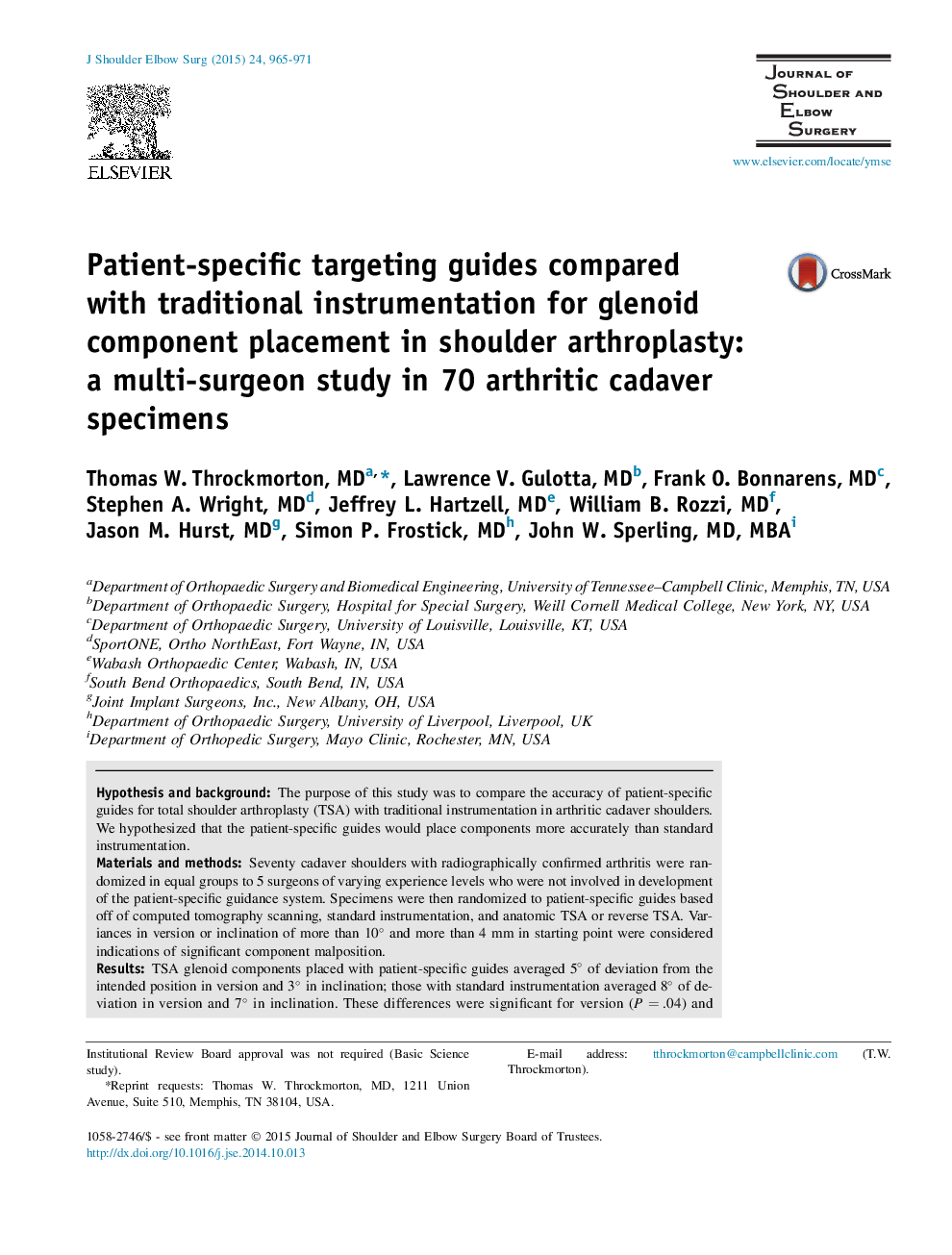| کد مقاله | کد نشریه | سال انتشار | مقاله انگلیسی | نسخه تمام متن |
|---|---|---|---|---|
| 4073176 | 1266974 | 2015 | 7 صفحه PDF | دانلود رایگان |
Hypothesis and backgroundThe purpose of this study was to compare the accuracy of patient-specific guides for total shoulder arthroplasty (TSA) with traditional instrumentation in arthritic cadaver shoulders. We hypothesized that the patient-specific guides would place components more accurately than standard instrumentation.Materials and methodsSeventy cadaver shoulders with radiographically confirmed arthritis were randomized in equal groups to 5 surgeons of varying experience levels who were not involved in development of the patient-specific guidance system. Specimens were then randomized to patient-specific guides based off of computed tomography scanning, standard instrumentation, and anatomic TSA or reverse TSA. Variances in version or inclination of more than 10° and more than 4 mm in starting point were considered indications of significant component malposition.ResultsTSA glenoid components placed with patient-specific guides averaged 5° of deviation from the intended position in version and 3° in inclination; those with standard instrumentation averaged 8° of deviation in version and 7° in inclination. These differences were significant for version (P = .04) and inclination (P = .01). Multivariate analysis of variance to compare the overall accuracy for the entire cohort (TSA and reverse TSA) revealed patient-specific guides to be significantly more accurate (P = .01) for the combined vectors of version and inclination. Patient-specific guides also had fewer instances of significant component malposition than standard instrumentation did.ConclusionPatient-specific targeting guides were more accurate than traditional instrumentation and had fewer instances of component malposition for glenoid component placement in this multi-surgeon cadaver study of arthritic shoulders. Long-term clinical studies are needed to determine if these improvements produce improved functional outcomes.
Journal: Journal of Shoulder and Elbow Surgery - Volume 24, Issue 6, June 2015, Pages 965–971
